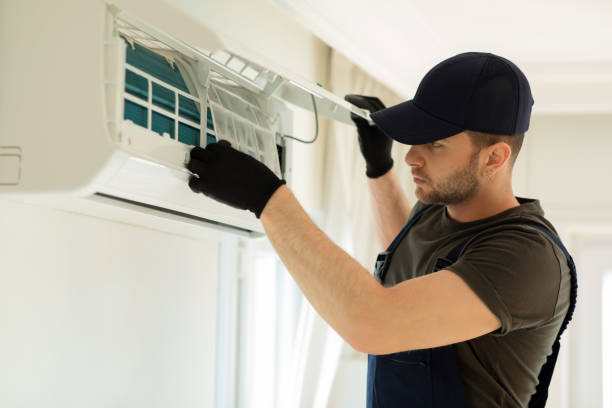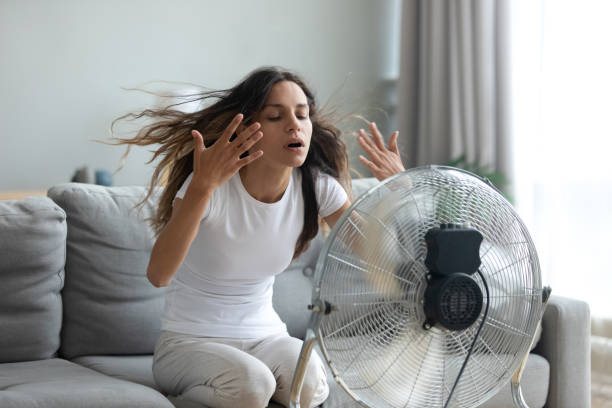With summer in full swing, the battle against scorching temperatures is on. Keeping your home comfortably cool can quickly become an uphill battle that results in sky-high energy bills. However, there are smart strategies you can employ to beat the heat without blowing your budget. Follow these summer cooling tips to stay cool while saving money.
Harness the Power of the Shade
Windows are a major entry point for the sun’s potent rays, allowing heat to transfer into your home. Simply keeping blinds, shades, curtains, or drapes closed during the hottest parts of the day can make a significant difference in indoor temperatures. For maximum cooling impact, choose window coverings made of thick, tightly woven materials in light, reflective colors. Consider installing awnings, exterior blinds or shades to block sunlight before it even reaches your windows.
Heat buildup in your attic Due to poor ventilation and insulation also contributes to warm indoor temperatures. Ensure your attic is adequately insulated, and install vents, fans or windows to allow hot air to escape. This simple step can reduce heat radiating down into your living spaces.
Create a Cross-Breeze with Fans
Even at high summer temperatures, portable fans and ceiling fans are your friends. They create a cooling, circulating airflow that can make you feel several degrees cooler. Position fans strategically near open windows to draw in cooler outside air in the evenings and early mornings while exhausting stale, hot indoor air. Box fans work great for this intended cross-breeze effect.
While fans don’t actually lower a room’s temperature, they provide an incredible chill factor for minimal operating cost. Just remember that fans cool people through the wind chill effect, not spaces, so turn them off when you leave a room to save electricity.
Minimize Heat from Household Activities

Your oven, stove, clothes dryer, and even lightbulbs all generate unwanted heat inside your home. Whenever possible, minimize their usage during the day’s hottest hours when you’re trying to keep cool. Cook outdoors on the grill, air-dry clothes whenever you can, and take advantage of natural daylight instead of electric lighting.
You can further combat heat buildup by closing blinds in rooms you aren’t actively occupying to keep out solar heat gain. Small adjustments to your routine household activities can make your cooling efforts that much more effective.
Set Your Thermostat for Savings
When using your air conditioner, there’s no need to keep your home at arctic temperatures. Most experts recommend setting your thermostat to 78°F when the home is occupied to strike a balance between comfort and affordability. When away for longer periods, raise the setting up to 85°F to reduce energy consumption.
Additionally, ensure that your HVAC air filter is replaced regularly, usually every 1-3 months. A clogged, dirty filter forces your AC to work harder and reduces efficiency. Finally, keep vents and returns clear of obstructions like furniture that can restrict airflow.
Don’t Let Cool Air Escape Through Leaks
Proper insulation and tight air sealing help keep your precious cool air inside where it belongs. Check for and seal any drafty cracks and gaps around windows, doors, electrical outlets, plumbing fixtures, attic hatches and wiring passages. Adding weather stripping and caulk can prevent cool air from escaping.
You should also ensure your attic has adequate insulation levels – the Department of Energy recommends R-38 or about 12″ of insulation. An energy audit can often identify and prioritize cost-effective insulation upgrades to maximize your comfort and savings.
Maintain Your AC Unit for Peak Performance
A well-maintained AC unit will operate much more efficiently and provide better cooling while lasting longer. At the start of each summer, give your outdoor condenser unit a thorough cleaning by hosing off any leaves, dirt, or debris that has accumulated. Check that the refrigerant lines aren’t obstructed, and clear away any bushes or plants encroaching on the unit.
It’s also recommended to have an annual preventative tune-up performed by an HVAC professional. This allows them to inspect all components, ensure proper refrigerant levels, clean the coils, and optimize your system to run at peak performance for the cooling season ahead. The tune-up cost is quickly recouped through more efficient operation and extending your AC’s service life.
Consider an AC Replacement

If your air conditioning unit is over 10-15 years old, you may want to budget for a new, higher-efficiency replacement system. Quality ENERGY STAR certified air conditioners can significantly reduce your cooling costs by 20% or more compared to older units, while also improving home comfort and humidity control.
As you evaluate new systems, factor in the unit’s seasonal energy efficiency ratio (SEER) rating which measures cooling performance per energy used. Higher SEER units in the 16–23 range will cost more upfront but deliver greater savings month after month through lower energy consumption.
To complement your new cooling system, consider upgrading to a smart or Wi-Fi enabled thermostat as well. These connected thermostats make it easy to remotely control settings and adjust automated schedules for greater energy savings while you’re away.
With summer temperatures showing no signs of relenting, staying cool is a top priority. But that doesn’t mean you have to empty your wallet in the pursuit of comfort. By employing smart shading strategies, minimizing indoor heat sources, leveraging cross-ventilation, and using your air conditioner as efficiently as possible, you can beat the heat while keeping energy costs in check. A few simple adjustments can go a long way in helping you stay cool for less this summer.



Leave a Reply